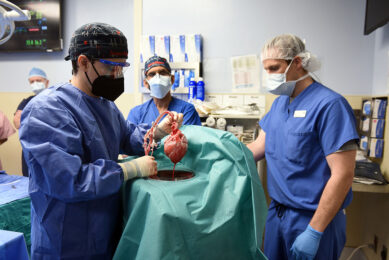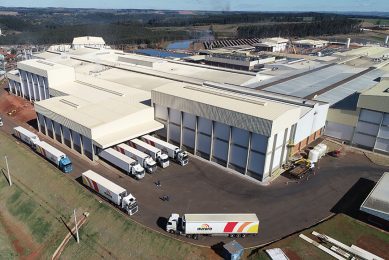Keeping disease out of the farm (II)

This is the second in the series of John Gadd’s ‘Keeping disease out of the farm’. Last issue covered the 2 most common sources which weaken any farm’s defences – other pigs and ‘induction, quarantining and feedback’. Now for some other vectors ?(a ‘vector’ in this case is any carrier of disease or infection). Most of the following are well-known but there are a few new observations.
Any vehicles! From the vet’s car, farm workers cars or bikes, all types of delivery and collection trucks, salespersons and visitors’ cars. I put vehicles as number 3 in importance as a primary threat to full biosecurity for 2 reasons.
First, the penny has dropped concerning humans, and most pig producers now discourage visitors, and shower-in and change clothes/boots for anyone passing through the pig-safe perimeter. We are getting on top of that one – but are still way adrift on vehicles, as follows. Our disastrous experiences with the Foot-and-Mouth Disease (FMD) virus 20 or more years ago in Britain revealed how quickly the initial focus of the infection seemed to be spread, with outside sheep often driven from place to place, using vehicles. Disinfection of the tyres of animal transport was rudimentary at best. Wheel arches and the spaces between double wheels were unattended-to as were vehicle undersides.
The textbooks don’t go anywhere near covering the subject, and so important is this part of the biosecurity scene that I am devoting the whole of next month’s column to vehicles. With PEDv threatening, it would be beneficial to read what we must do in future, as the Americans have found.
There are still 1 or 2 holes to be stopped up:
- Never let drivers collecting or delivering pigs, however helpful they may seem, anywhere near the loading facilities.Use your own staff to do it.
- Same for bulk food deliveries, use your own connecting hose and fix it yourselves – keep the drivers out beyond the pig-safe perimeter.
- Bins not adjacent to the perimeter? Major error in farm design. New stock should never be unloaded through the doors where shipped or cull pigs leave the farm.
- Some vets don’t bring a rubber apron and viral-approved disinfectant with them, so you may have to have them handy and insist that they scrub down before going near your pigs. It is those obliging quick ‘I just popped in’ visits where this seems to happen. More haste – more risk!
- Contrary to rumour, rat poisons seem as effective as ever – if administered properly. Rumours of bait resistance are caused by not continuing baiting comprehensively or long enough. Busy people forget to check the stations. Any size of farm should appoint a ‘rat supremo’ with sole responsibility, then it works.
- Rats hate open spaces and areas between piggeries need to be kept clear of old equipment etc. – farmers can be an untidy lot.
- Another common vector. 10% of farms visited use netting. Not the final answer, but it helps.
- Hot countries plagued beyond belief use flannels soaked in diluted syrup impregnated with insecticide hung on a wire down the building. The flies drop off, leave and die. Helps the hot countries somewhat, but is really effective where the fly population is less acute but is still a dangerous disease vector you should not ignore. Make it part of the rat supremo’s job as renewal is essential.
- Insect-spray breeding-ground puddles around the farm in dry weather and look to your surface drainage.
- Many bacteria and especially viruses in winter survive long distances, but there are risks from only a few metres too, as S. meningitis, M. arthritis, Salmonella discharged straight towards inlet fans in the next buildings, especially containing the vulnerable farrowing and weaner nursery occupants, can do great recurrent damage.We overcame such problems by fixing a deflection vent at not more than 45 degrees (so as not to reduce fan power) thus deflecting the discharge at least 10-12 m away from the inlet vents of nearby buildings. I’m told these and many other pathogens are not likely to survive this distance outside even in summer. Advice: go out and examine the outlet-inlet configuration of the barns, and consider fitting deflectors if the path the air flows from exhaust to the nearest inlet is less than 20 metres (for young pigs) to be on the safe side.
Further reading:
Keeping disease out of the farm (III)
Keeping disease out of the farm (I)











